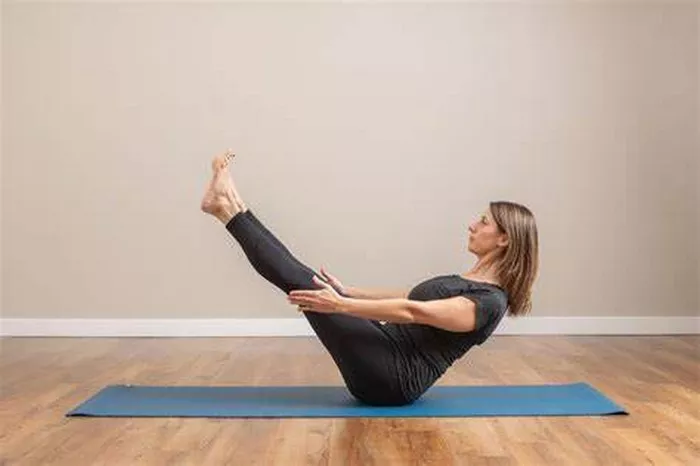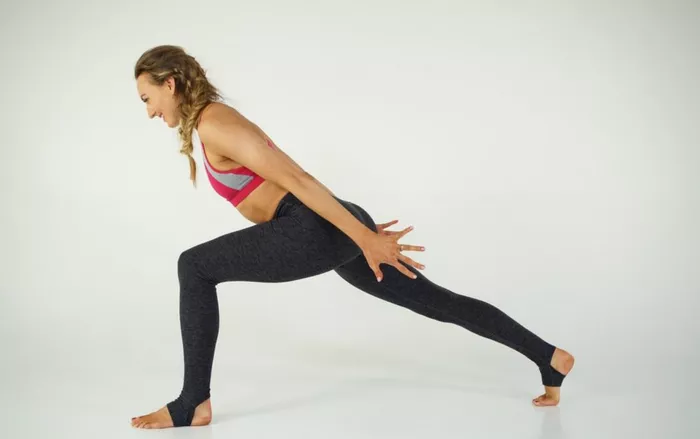Yoga, with its myriad forms, postures, and techniques, is celebrated for cultivating both physical and mental strength. However, within the wide-ranging world of yoga poses, there are certain advanced postures that test even the most seasoned practitioners. These challenging postures often require exceptional strength, flexibility, balance, and mental focus, making them widely recognized as some of the “hardest” yoga poses in practice.
In this article, we’ll explore what makes a pose “hard,” highlight some of the most difficult yoga postures, and dive into the benefits, challenges, and progressions for each. Whether you’re a beginner or an advanced yogi, this guide offers insights into both the physical and mental discipline required for mastering the hardest yoga poses.
Understanding What Makes a Yoga Pose Difficult
Determining the hardest yoga pose involves various factors. Here are some of the main components that contribute to the difficulty of a pose:
Strength: Many advanced yoga poses require significant muscular strength. Core strength, upper body strength, and leg strength are all critical for poses that involve holding your own body weight.
Flexibility: Tight hamstrings, shoulders, or hip flexors can make certain poses nearly impossible. Advanced poses often require deep flexibility that goes beyond the typical range of motion.
Balance: Arm balances, inversions, and one-legged postures are challenging due to the high level of balance they require. A strong sense of balance helps yogis hold complex postures with stability and grace.
Endurance: Holding advanced poses requires stamina, not just to achieve the position but to maintain it.
Mental Focus: Some of the hardest poses require intense concentration. Calming the mind, maintaining breathing, and staying focused can be as challenging as the physical components.
Body Awareness: Awareness of alignment, the distribution of weight, and the engagement of specific muscles is crucial for challenging poses.
The hardest yoga poses combine many of these aspects, creating an intense practice that demands dedication, patience, and perseverance.
Some of the Hardest Yoga Poses
Let’s take a look at several poses that yogis worldwide consider some of the most challenging. Each has unique demands on the body and mind, and all require dedicated practice to master.
1. Handstand Scorpion Pose (Taraksvasana)
Handstand Scorpion Pose, also known as Taraksvasana, is a forearm balance that combines an inversion with a deep backbend, making it a test of both strength and flexibility.
Physical Requirements: This pose requires a strong core, shoulders, and back muscles. Additionally, a deep range of spinal flexibility and hip mobility is essential to arch the body and bring the feet toward the head.
Mental Focus: Balancing in this pose demands intense concentration and control, especially in managing the forearm balance while bending the spine.
How to Progress: Building strength in foundational inversions like Forearm Stand (Pincha Mayurasana) and increasing flexibility with poses like Cobra (Bhujangasana) or Camel (Ustrasana) are helpful steps.
Benefits: Taraksvasana builds upper body strength, enhances flexibility in the spine, and improves balance and focus.
2. Eight-Angle Pose (Astavakrasana)
Named after the sage Astavakra, this advanced arm balance twists the body while balancing on the hands, creating a significant challenge for most practitioners.
Physical Requirements: Eight-Angle Pose requires core strength, especially in the obliques, arm strength, and the ability to twist and hold the legs in a locked position.
Mental Focus: Staying balanced and controlled during the twist is crucial. The pose requires maintaining a steady mind and focusing on breathing despite the physical challenge.
How to Progress: Preparatory poses include core-strengthening exercises like Boat Pose (Navasana) and twists like Revolved Triangle (Parivrtta Trikonasana). Arm balances like Crow Pose (Bakasana) also help build the strength needed.
Benefits: Astavakrasana improves arm strength, core stability, and enhances focus. It also improves flexibility in the hamstrings and hip flexors.
3. Peacock Pose (Mayurasana)
Peacock Pose, or Mayurasana, involves balancing the entire body on the palms with elbows pressing into the abdomen, requiring both strength and balance.
Physical Requirements: This pose demands strong wrists, forearms, and core muscles. Additionally, engaging the glutes and legs to keep them aligned is crucial.
Mental Focus: Due to the challenging nature of balancing the entire body on the hands, steady breathing and focus are necessary to avoid losing balance.
How to Progress: Practicing poses like Plank Pose (Phalakasana) and Crow Pose helps develop the wrist strength and balance required for Mayurasana.
Benefits: Peacock Pose strengthens the wrists, arms, and core, enhances balance, and may aid in improving digestion by stimulating the abdominal area.
4. Firefly Pose (Tittibhasana)
Firefly Pose is an advanced arm balance that requires significant flexibility and strength in the arms, shoulders, and hamstrings.
Physical Requirements: Core and arm strength are essential to lift the body off the ground. Flexibility in the hamstrings and inner thighs is also necessary to extend the legs fully.
Mental Focus: Focus and calmness are crucial as the pose demands balance and concentration.
How to Progress: Practicing Seated Forward Bend (Paschimottanasana) for hamstring flexibility, and Crow Pose for arm balance, are helpful preparations.
Benefits: Tittibhasana builds arm and core strength, increases flexibility in the hamstrings and inner thighs, and develops balance and concentration.
5. Feathered Peacock Pose (Pincha Mayurasana)
Feathered Peacock Pose, or Pincha Mayurasana, is a forearm stand that requires balance, core strength, and shoulder stability.
Physical Requirements: Strong shoulders and a stable core are necessary. Additionally, hip mobility and a sense of balance are essential to hold this inverted posture.
Mental Focus: Maintaining a calm mind and steady breath helps prevent wobbling, which is crucial for sustaining balance.
How to Progress: Practicing Dolphin Pose to build shoulder strength and stability, as well as using a wall for support when first attempting Pincha Mayurasana, can help build confidence.
Benefits: Pincha Mayurasana strengthens the shoulders, arms, and core, improves balance, and boosts confidence by overcoming the fear of falling.
6. Lotus in Headstand (Urdhva Padmasana in Sirsasana)
This posture is an inversion with a classic Lotus Pose, combining the demands of a headstand with the hip flexibility required for Lotus.
Physical Requirements: A strong core, balance, and flexibility in the hips and knees are all required for this advanced posture.
Mental Focus: Balancing in an inverted lotus requires focus and concentration, as any shift in weight distribution can destabilize the pose.
How to Progress: Practicing Headstand (Sirsasana) and Lotus Pose (Padmasana) separately until comfortable can help build the strength and flexibility necessary.
Benefits: This posture builds core strength, improves balance, and enhances focus. It also opens the hips and stretches the legs.
7. One-Handed Tree Pose (Eka Hasta Vrksasana)
One-Handed Tree Pose, a one-handed handstand, is one of the most advanced balancing postures, requiring intense strength, balance, and coordination.
Physical Requirements: Significant arm, shoulder, and core strength are essential, as well as refined balance and mental focus.
Mental Focus: Concentration is essential, as this pose requires adjusting to subtle weight shifts to maintain balance.
How to Progress: Progressing from regular handstands and practicing with wall support can help build strength and confidence.
Benefits: This pose significantly strengthens the arms, shoulders, and core while enhancing balance, body awareness, and mental focus.
The Journey Toward Mastery
Each challenging pose offers lessons in perseverance, self-discipline, and humility. Most yogis will encounter plateaus, setbacks, and breakthroughs as they advance in their practice. Here are some general tips for progressing safely and effectively toward mastering these advanced postures:
Practice Foundational Poses: Developing a strong foundation through basic poses like Plank, Downward-Facing Dog, and Warrior poses is essential for building strength and stability.
Focus on Alignment: Alignment prevents injury and ensures you are activating the right muscles.
Engage in Consistent Practice: The hardest poses require not only strength and flexibility but consistency over time.
Listen to Your Body: Pushing too hard can lead to injury. It’s essential to understand your body’s limits and make adjustments as needed.
Seek Guidance: Practicing under the guidance of an experienced instructor can provide invaluable feedback on alignment, technique, and progressions.
Mindful Breathing: Controlled breathing, or pranayama, helps maintain focus and calm the mind, which is particularly useful in challenging poses.
Conclusion
Mastering the hardest yoga poses is a journey that brings many physical and mental rewards. These postures are not merely about demonstrating strength or flexibility but about cultivating patience, discipline, and self-awareness. Whether or not these advanced poses are within reach, every step in the journey deepens one’s understanding of the body, mind, and spirit.
For those who wish to tackle these challenging poses, the path is not about competition or comparison; it’s about self-discovery and consistent effort. As yoga teaches us, the practice is as much about the journey as it is about the destination.
Related Topics:























